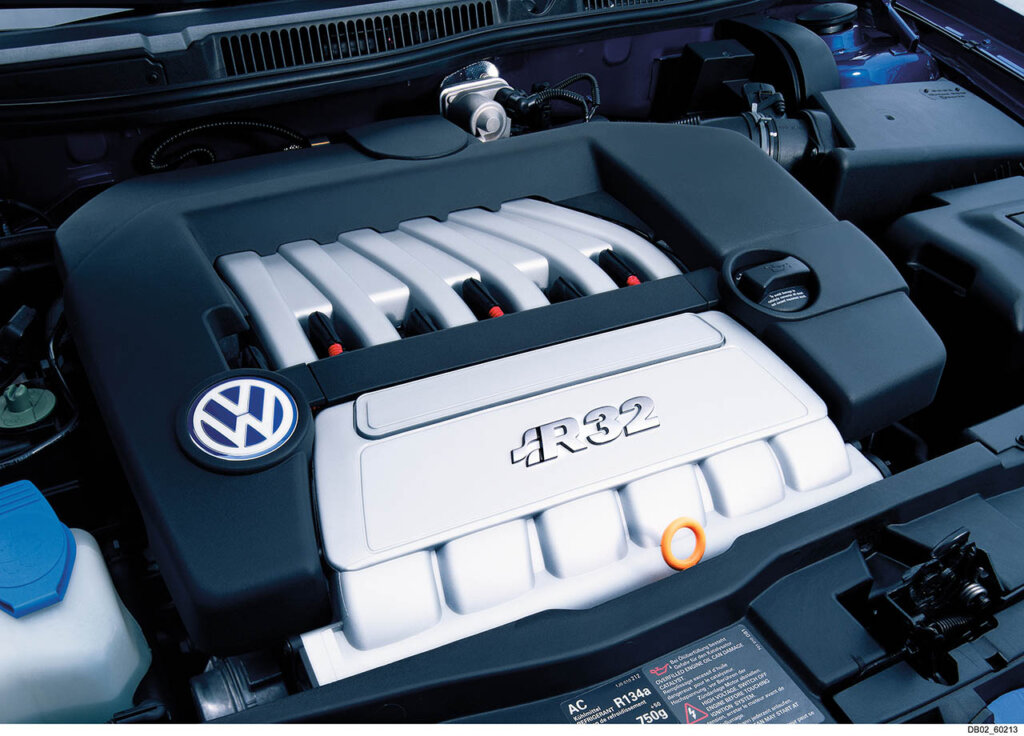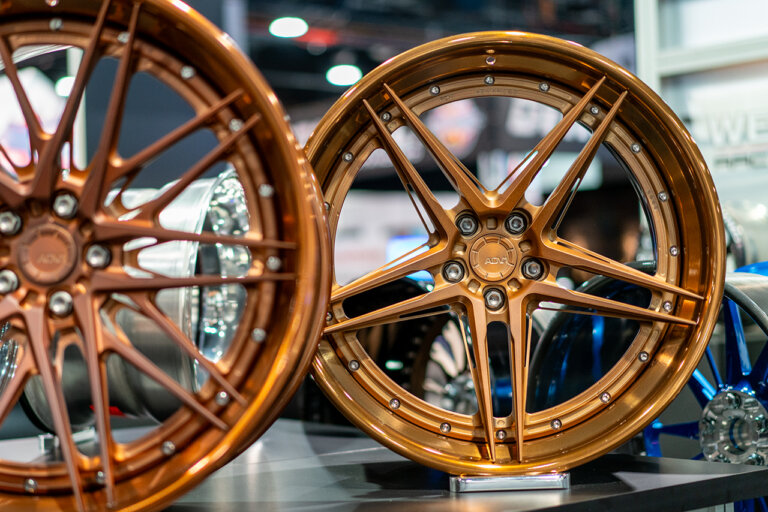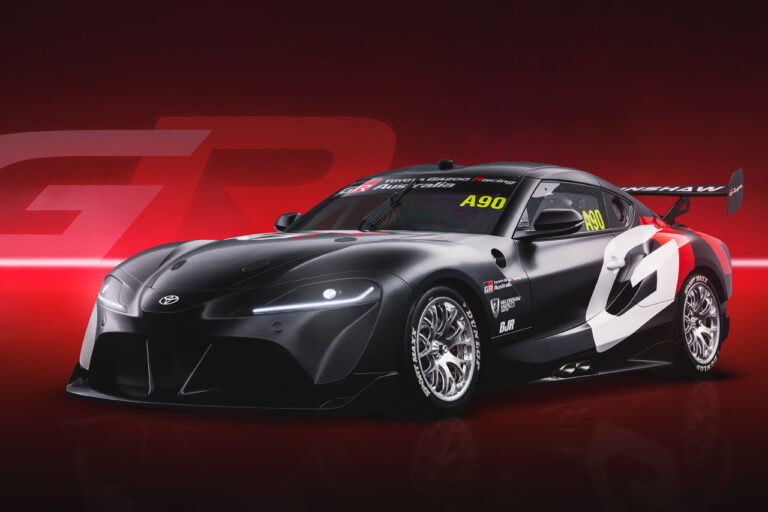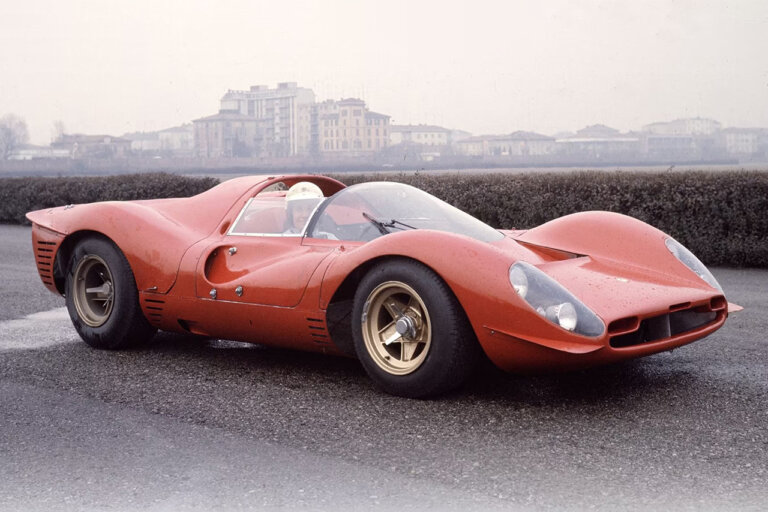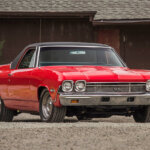The Genesis of Golf
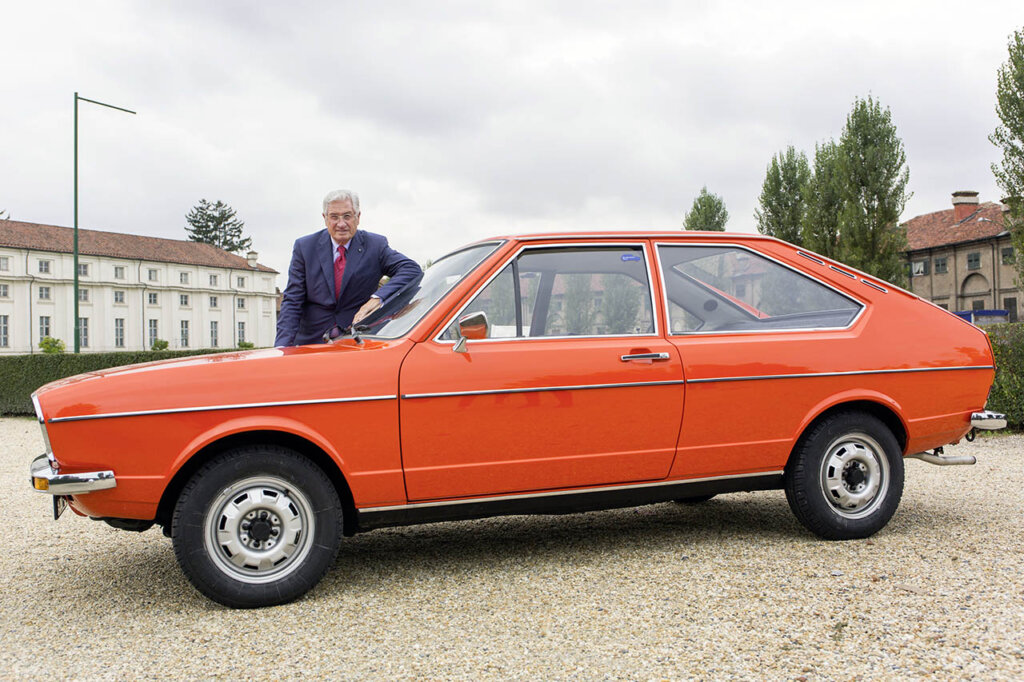
Source: Volkswagen Newsroom
After suffering from financial losses during the 70’s and a company overhaul, Volkswagen eventually got closer in delivering the first Volkswagen Golf model. In January 1970, Giugiaro was invited to Wolfsburg to contribute to development project EA337. Upon arriving at VW’s research center, he encountered a disassembled Fiat 128, providing inspiration for the C-segment car Volkswagen envisioned. The design brief outlined a two-box body in three- and five-door versions, along with basic dimensions and powertrain options. Giugiaro’s resulting design showcased his distinctive “origami” style, characterized by sharp corners and flat planes.
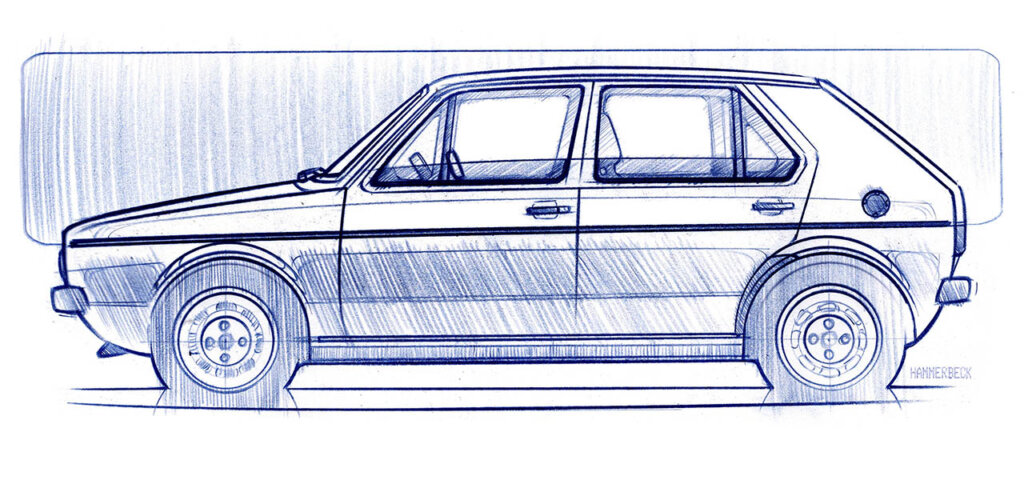
Source: Volkswagen Newsroom
Considered by Giugiaro as the pinnacle of his career, the Mk1 Golf prototypes featured rectangular headlamps and expansive tail-lamp assemblies, with one even experimenting with a sliding side door. During development, potential names like “Blizzard” and “Caribe” were considered but ultimately yielded to the chosen moniker “Golf”.
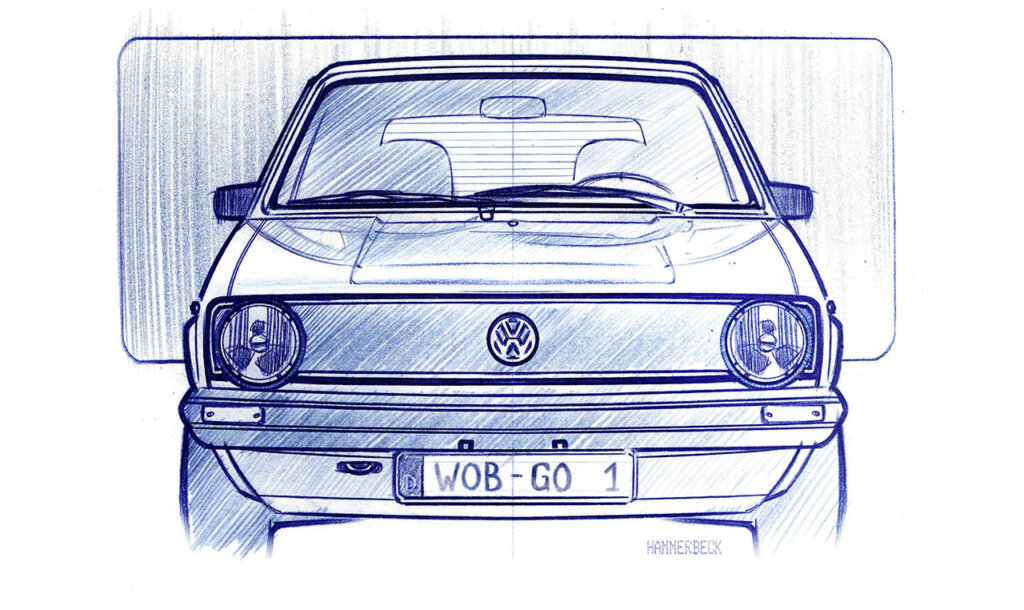
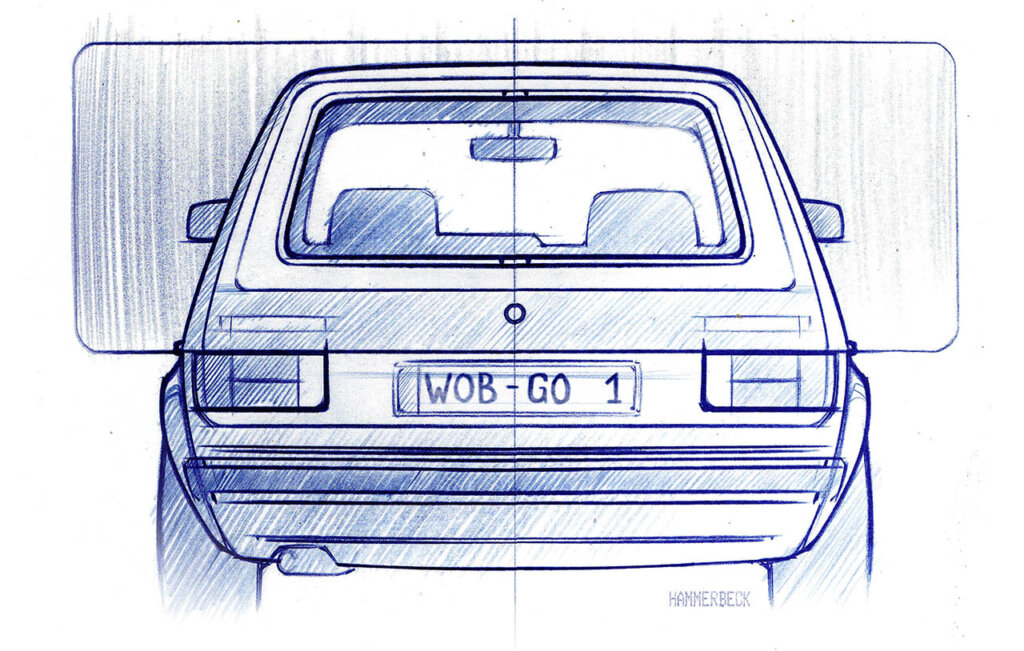
The Golf embraced a practical “two-box” design, incorporating a steep hatchback instead of a traditional trunk, all mounted on a steel unibody chassis. In addition, it featured a front-mounted transverse engine that powered the front wheels. The available engines belonged to two Audi families, both comprising water-cooled inline four-cylinder four-stroke engines with two valves per cylinder. These engines were driven by a single overhead camshaft operated by a timing belt. The initial engines utilized 2-barrel Zenith carburetors and belonged to the original EA111 line, featuring rocker arms for valve operation and a 20° forward tilt. Meanwhile, the 1.5L, 1.6L, and 1.8L engines were part of the EA827 family. Their power output ranged from 50 hp to 70 hp, producing a respectable top speed of 87 mph. The Golf Mk1 can go 0 to 60 mph in under 16 seconds.
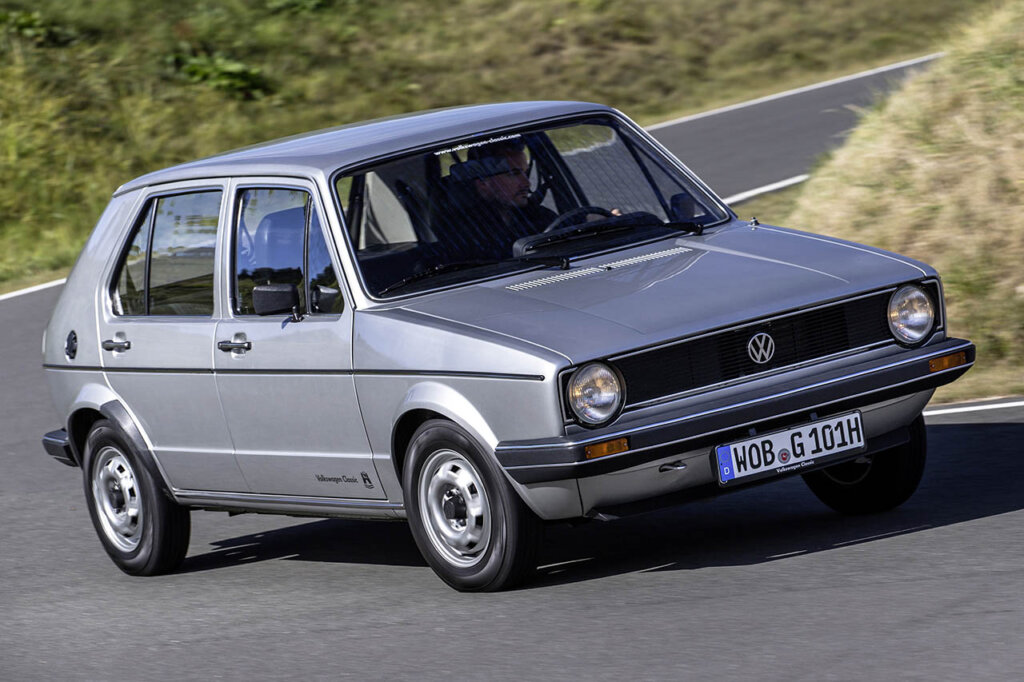
Birth of the GTI
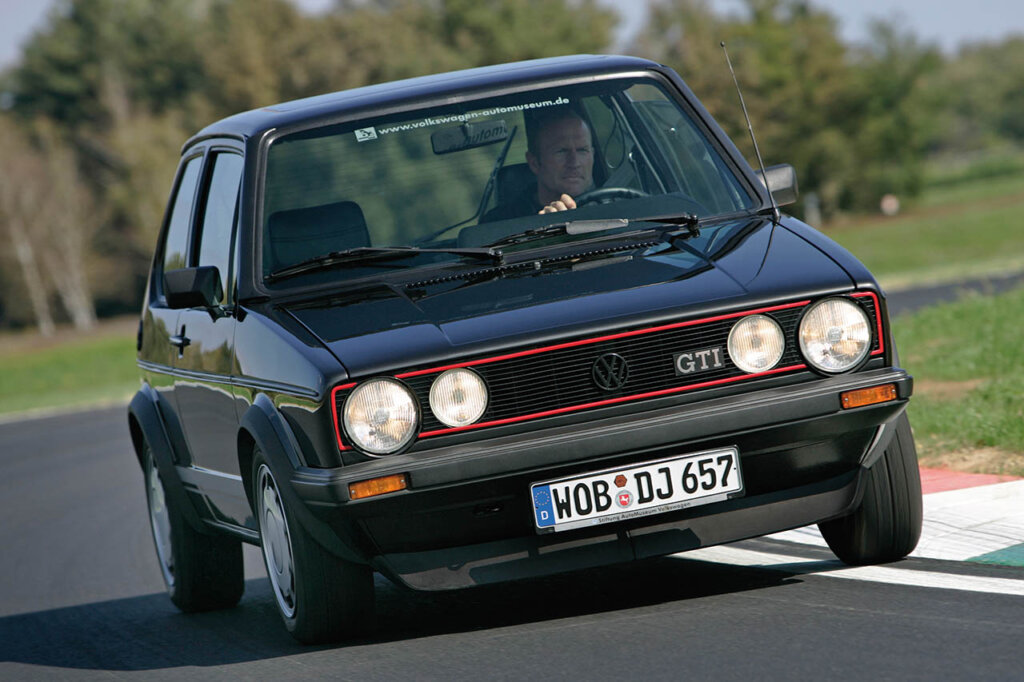
Source: Volkswagen Newsroom
Due to the negative response to the 1973 Beetle “GSR,” Volkswagen hesitated to develop a faster Golf. However, the VW Press Department, led by Anton Konrad, and engineer Alfons Löwenberg initiated a clandestine project for a high-performance “Sport Golf.” The team, including Gunter Kühl, Herbert Schuster, Hermann Hablitzel, Jürgen Adler, Horst-Dieter Schwittlinsky, and Franz Hauk, created a prototype using a Scirocco base with an improved EA827 engine. Initially criticized for harsh suspension and noise, the team integrated the fuel-injected version from the Audi 80 GTE, presenting the GTI to Volkswagen’s management in early 1975 and finally received approval to start production. The first Golf GTI model debuted in March 1975 and was already a major improvement from the Golf Mk1. The early GTIs were equipped with an engine featuring a 3.13 in × 3.15 in, resulting in a displacement of 1.6 L; 96.9 cu in. The engine has an output of 108 hp at 6,100 rpm and 103 lbf⋅ft at 5,000 rpm. This powerplant was paired with a close-ratio 4-speed manual transmission. Special editions and regional variants were later released down the line, with performance upgrades and body style changes.
Golf Mk2: An Evolutionary Jump
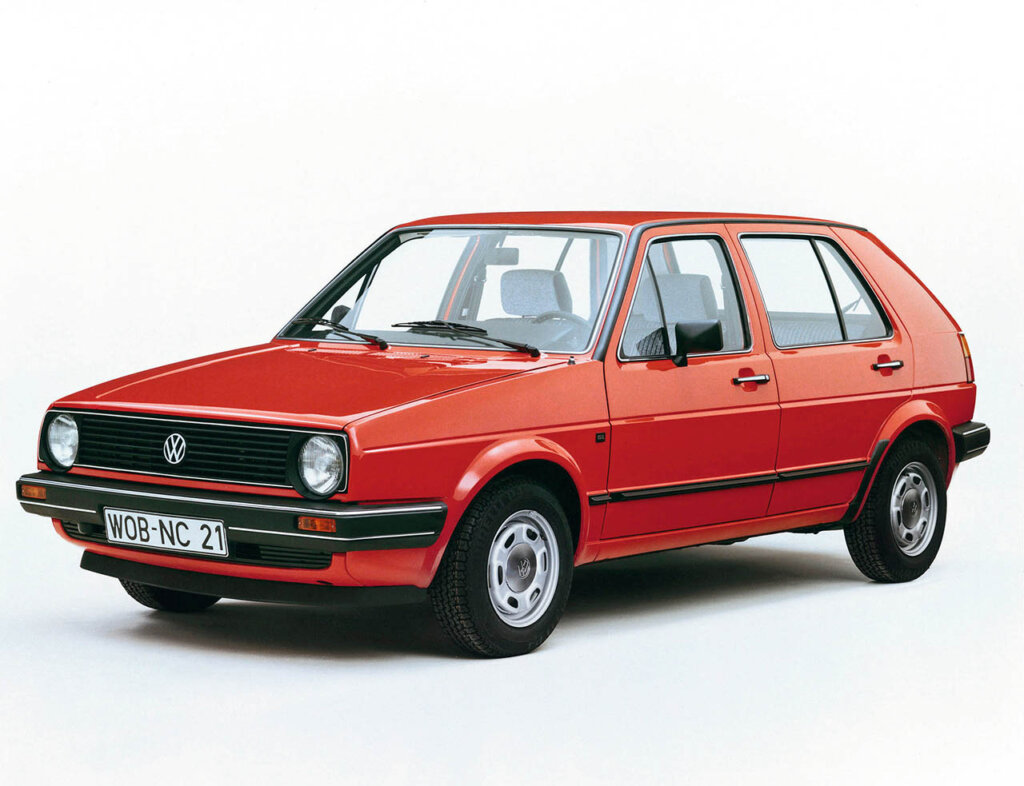
Source: Volkswagen Newsroom
The Volkswagen Golf Mk2, the second iteration of the Golf series and the successor to the Mk1, is a hatchback that served as Volkswagen’s primary sales driver from 1983 until the end of German production in late 1992, making way for the Volkswagen Golf Mk3. The Mk2 boasted increased dimensions compared to its predecessor, with a slightly larger wheelbase and expanded exterior dimensions. The weight also saw an increase of about 260 lb. While maintaining the general lines of the Giugiaro-designed Mk1, the Mk2, with exterior design overseen by VW design director Schäfer, featured a slightly more rounded appearance. The Golf Mk2 received an engine upgrade as well, ranging from 40 to 134 hp and reaching a top speed of 104 mph.
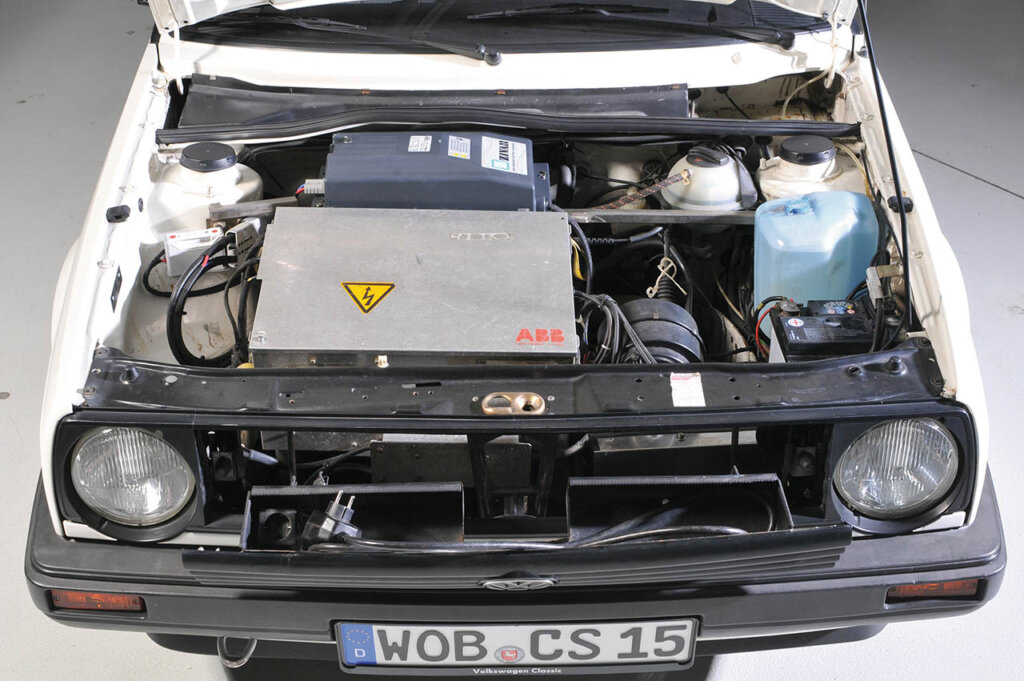
The GTI models continued, following the success of the Mk1 GTI models. Much like the Mk1 models, the GTI Mk2 featured a naturally aspirated Bosch K-Jetronic fuel-injected inline-four engine with a displacement of 1.8 L; 108.7 cu in, delivering a robust output of 110.5 hp.
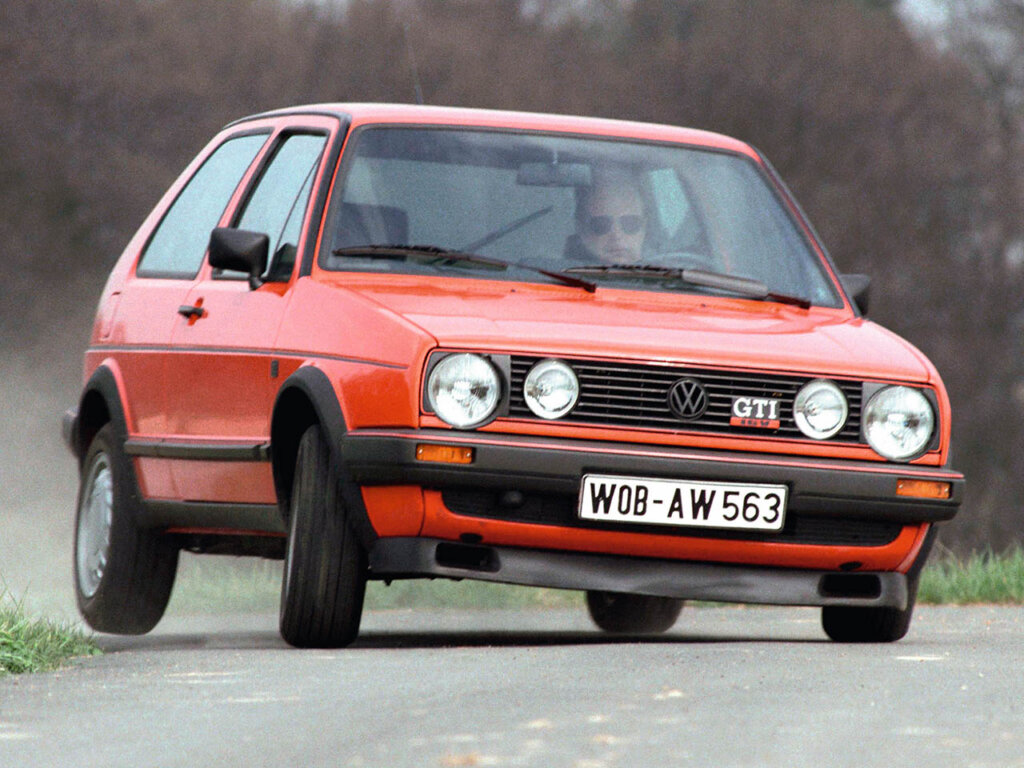
Source: Volkswagen Newsroom
Golf Mk3: Moving Outside the Box
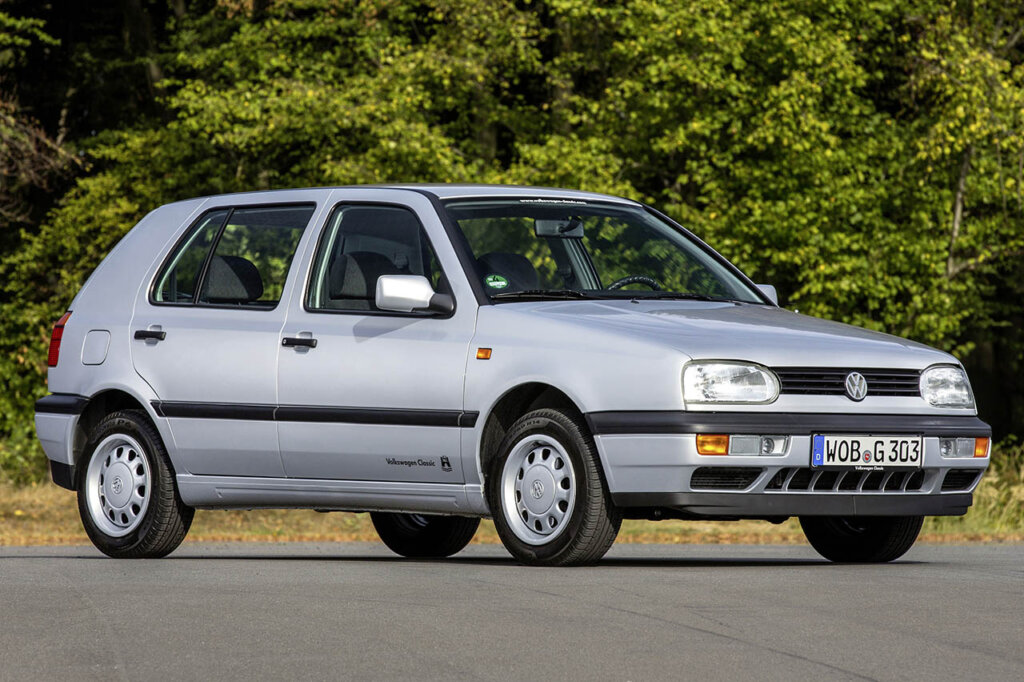
Source: Volkswagen Newsroom
As the auto industry changed with the release of rival cars like the Ford Escort and Peugeot, Volkswagen needed to evolve from their original Golf formula. In 1991, Volkswagen released their Golf Mk3 with a modern look and new body styling. The interior was redesigned to be more spacious and safer, which was a key focus during automotive production of that time. Much like its predecessors, the Golf Mk3 came with a variety of petrol engine options; the more affordable 1.4, 1.6, and 1.8-liter engines are reliably fuel-efficient and deliver smooth performance.
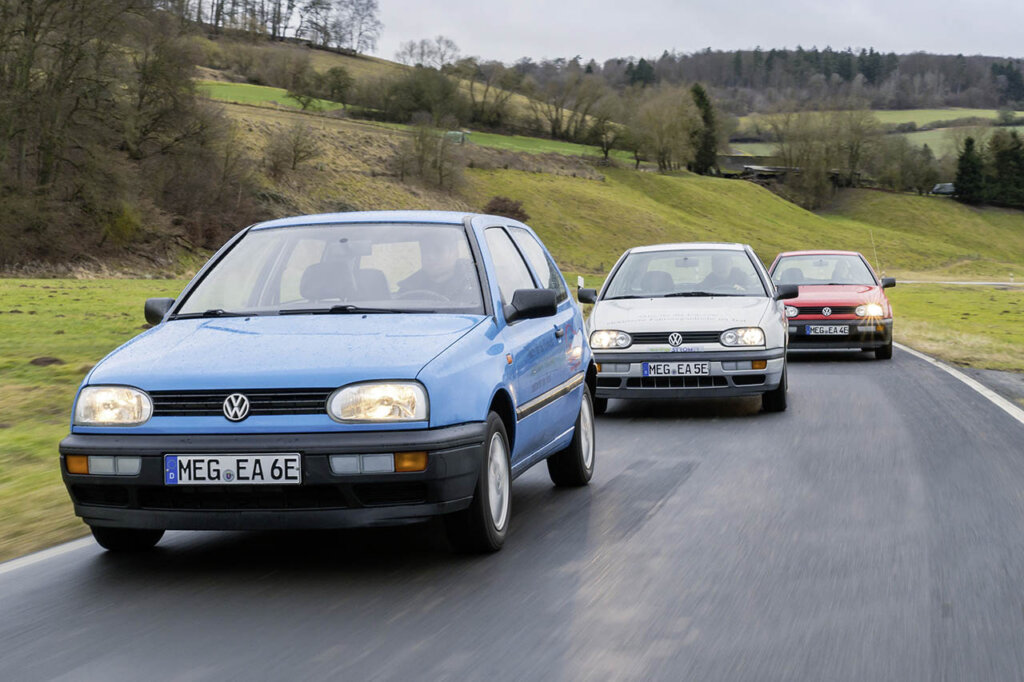
Source: Volkswagen Newsroom
The Mk3 GTI model was also released later that year and was positioned as a worthy successor to the GTi legacy. With an engine upgrade from 1.8 to 2.0, a 16-valve head coupled with electronic fuel injection showcased one of the era’s premier setups, boasting a power output of 150bhp that theoretically should have propelled the Mk3 admirably. Regrettably, some felt that this was not the case. The vehicle’s excessive weight led to a sluggish feel, falling short in comparison to the agile Mk2. Handling suffered due to the added weight, contributing to the perception that the Mk3 GTI couldn’t match the excellence of its predecessor, turning away some car enthusiasts in a significant manner.
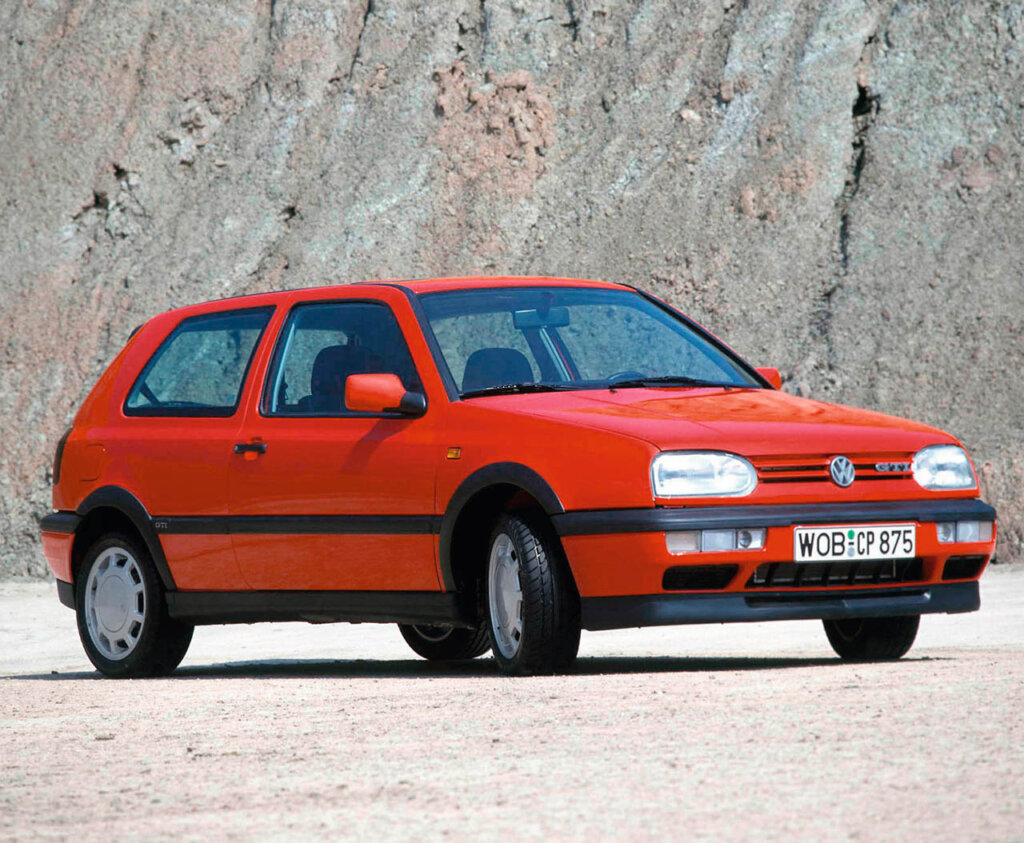
Golf Mk4: More Luxury & Style
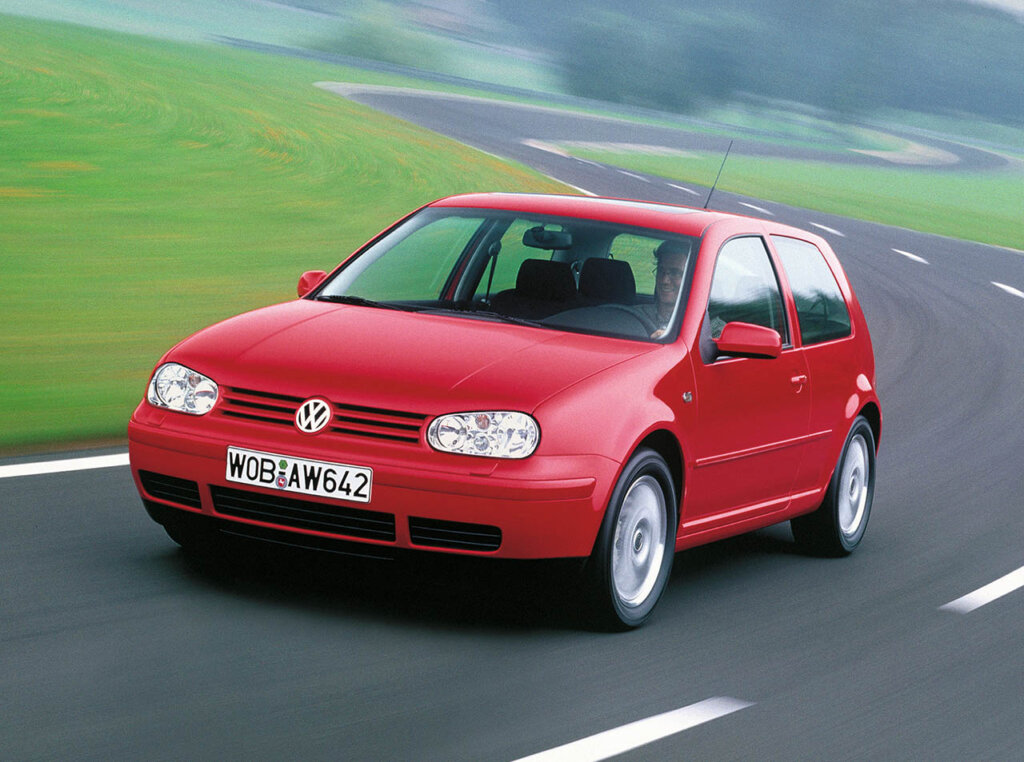
Source: Volkswagen Newsroom
Launched in 1997, the Mk4 Golf played a crucial role in Volkswagen’s strategy to elevate its products into a more upscale market segment, bridging the divide between mainstream economy cars and premium vehicles. This included a premium interior and better equipment levels for their next gen of Golfs. Like its predecessors, the Golf Mk4 came with numerous engine options, but the most popular ones were the 1.6-liter gasoline unit and the 1.9-liter diesel. Despite its quality improvements, the Mk4 was met with criticism due to its handling performance and being similar to the Mk1 Ford Focus. The Golf Mk4 wasn’t as popular as the Mk3 but still achieved some success.
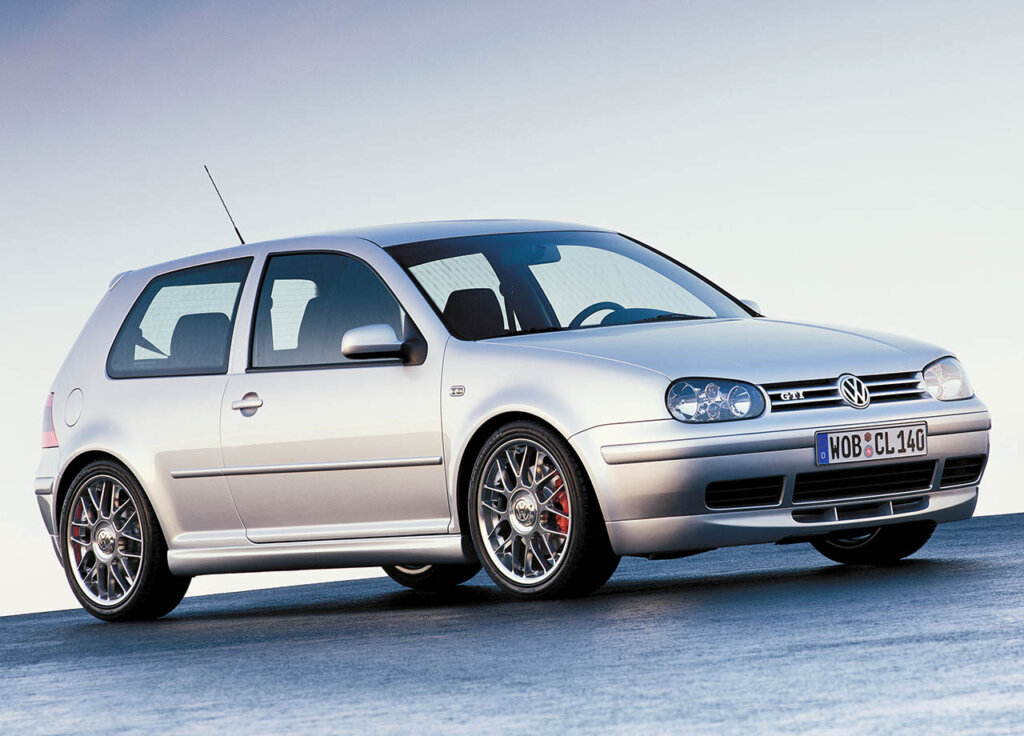
Of course, with every Golf model comes a GTI variant. The GTI variant came with several engine displacements between 1.8 and 2.3 liters. However, with VW’s shift toward a more upscale market, the company de-emphasized the sporty characteristics of the hatchback in favor of enhanced comfort. The Mk4 GTI faced criticism for this departure from its sporty roots. However, VW successfully revitalized the GTI’s image as a sporty hatch with the introduction of the 25th Anniversary edition and the subsequent Mk5 Golf.
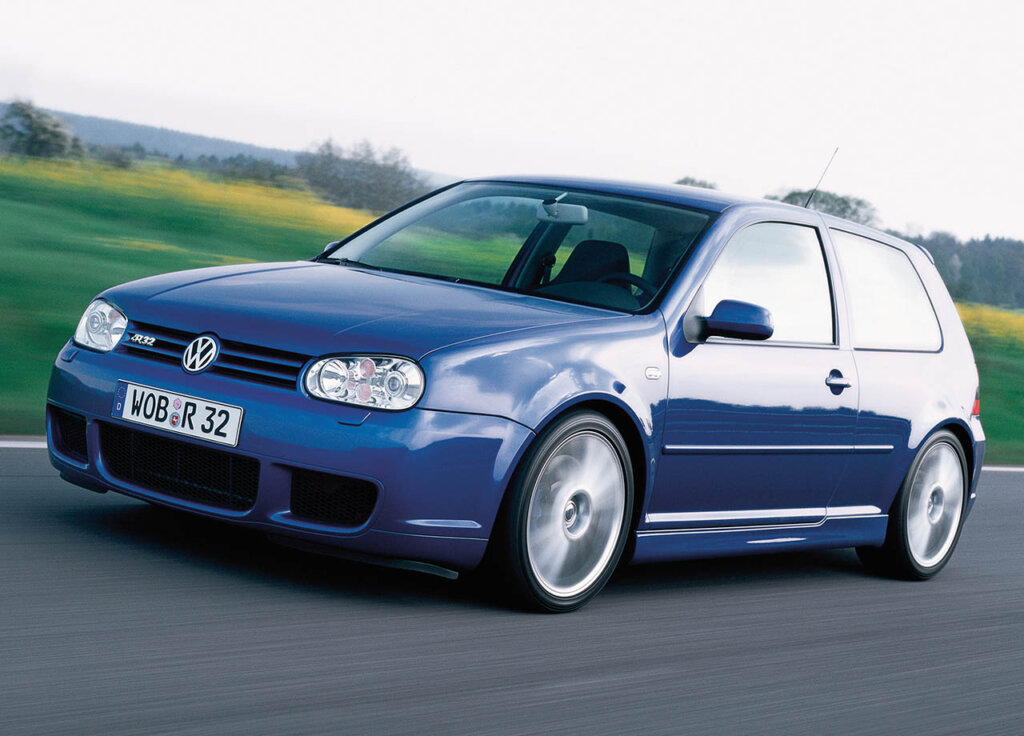
Source: Volkswagen Newsroom
Aside from the GTI models, one of the biggest models that came out of the Mk4 generation was the R32. The R32 essentially had the same drivetrain as the Audi TT, entailing a 3.2-liter VR6 engine producing 238 horsepower, 4motion four-wheel drive, xenon headlights, and the world’s inaugural production-grade dual-clutch gearbox. This was groundbreaking, and its significance endures today, evident in a swift 0-62 mph time of just 6.4 seconds with the DSG gearbox.
